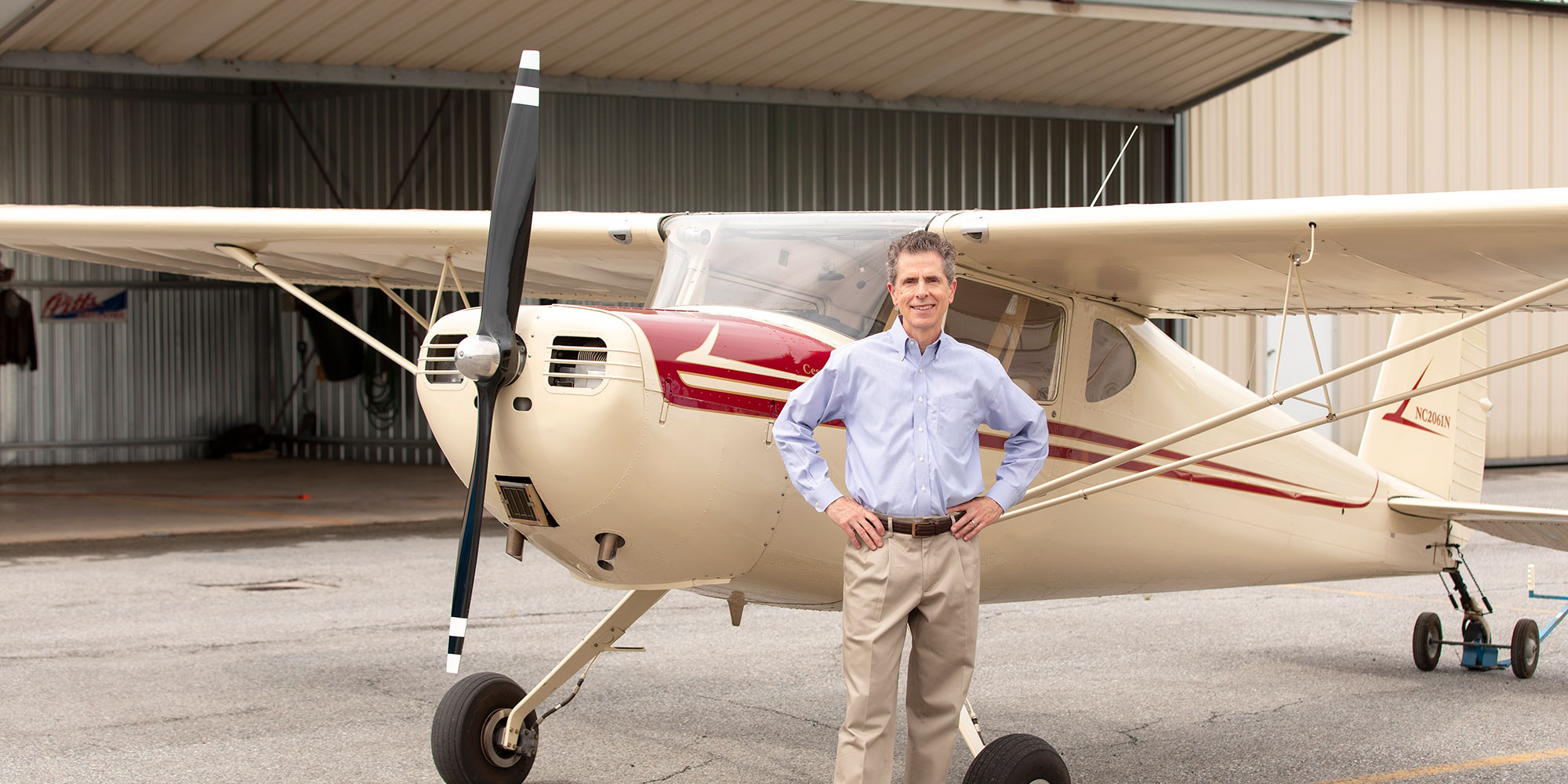Bob's Lung Story

Flying High Again After Surgery for a Collapsed Lung

“My time in the hospital was actually somewhat relaxing,” Bob said of his stay at Holy Cross Germantown Hospital. “I walked the halls, read, chatted with staff. It was a very positive experience,” said Bob Gillespie.
Last September, Bob Gillespie was enjoying a ride with his cycling group when he collided with two riders, who fell directly ahead of him and landed on his back. “I was in pain and a little short of breath when my wife came to pick me up but thought I was all right,” recalled the Bethesda orthodontist. A few hours later, though, when his breathing became more labored, he went to a local hospital. There, doctors diagnosed a collapsed lung and pneumothorax — air trapped between the lung and chest wall. A tube was inserted in the chest to let out the air so the lung could expand and relieve his shortness of breath.
Bob was then transferred by ambulance to Holy Cross Germantown Hospital for specialized care and management by a thoracic surgeon.
“Bob had a weakness at the top of the lung — an apical bleb,” said Riny Karras, MD, a fellowship-trained thoracic surgeon at Holy Cross Health Partners. “Without the accident, he would never have known he had this condition. It was the pressure on the weak area which caused Bob’s lung to collapse.”
In addition to an impact or other injury, a collapsed lung can result from excessive coughing, lung disease, or any type of physical strain such as heavy lifting. Air trapped in the space between the lung and chest wall causes compression on the heart and other structures in the chest. Symptoms include increased heart rate, chest pain, and shortness of breath, and anyone experiencing these should seek emergency medical attention.
“A collapsed lung can be serious,” said Dr. Karras. “A collapsed lung can heal on its own, but Bob’s lung would never be as strong without surgery because of the bleb,” Dr. Karras added. He waited two days to see if his lung would re-inflate without intervention, but with no improvement, Dr. Karras recommended surgery.
Using the hospital’s da Vinci® Xi Surgical System, the most advanced robotic technology available, Dr. Karras removed the weak area from his lung and performed a procedure to adhere the lung to the chest wall so that it would not drop again.
“There are many benefits to robotic surgery for our patients, including less invasive and painful incisions, nonnarcotic postoperative pain control, and a faster recovery,” said Dr. Karras, who has more than 10 years’ experience in minimally invasive robotic surgery.
“My time in the hospital was actually somewhat relaxing,” Bob said of his stay at Holy Cross Germantown Hospital. “I walked the halls, read, chatted with staff. It was a very positive experience.”
He went home two days after the operation. “My recovery was very uneventful,” he said. An avid cyclist who typically rides five times a week, Bob was back on a stationary bike a few days after his discharge from the hospital returned to work, and it wasn’t long before he was pursuing another one of his passions — piloting his 1947 Cessna.
“As a result of his treatment, Bob has been able to return to his normal routine without a problem,” Dr. Karras said.

Achieve Your Best Quality of Life
Finding the source of your thoracic health condition or disease affecting the lungs, esophagus, pleura, mediastinum, diaphragm, and chest wall starts today with a comprehensive evaluation by one of our specialists.
